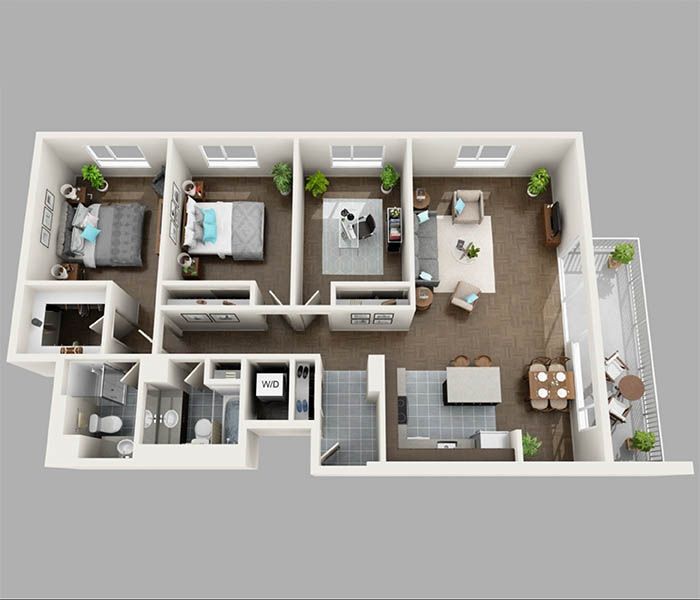

#ROOF FOR SWEET HOME 3D SOFTWARE#
What additional features would make this easier: In the end I was able to model practically everything in SW3D, but had to use Blender as auxiliary software and, in some cases, had to jump through some hoops: - The major challenge was to rotate objects on the z axis. The idea is to create a vast library of building modules that people can recombine to design their own buildings.
#ROOF FOR SWEET HOME 3D HOW TO#
I'll also publish tutorials on how to use and add to the libraries. My plan is to make publicly available both the building materials and module libraries and encourage people to use them to design additional modules and structures. If it were me, I'd mention that we'll be using SW3D as the main design and documentation software for OBI. This would be a good opportunity to mention OBI - although it's a shame we don't yet have a website. Following our modular approach, several parts of the chicken coop are themselves modules - the floor, doors, nesting boxes, etc - which can be assembled into different designs.

I'm also using SW3D to model functional components, such as the chicken coop (). Here are a few examples: - All the SW3D files are publicly available on our repo - for people to use and modify - and we'll continue to add more. The models were also used to create step-by-step build instructionals. Sweet Home 3D offers users a chance to see a remodeled room or a brand new home before a single nail has been driven. Then I created another library of modules (walls, doors, windows, roof) and used it to design all the different greenhouses that appear on the infographic - as well as the one we actually built. I then used this library of building materials to design each module: walls, roof, doors, windows, etc. The role SW3D played in this project: - I started by designing and creating a library of building materials (using the Furniture Library Editor): dimensional lumber, glazing panels, plywood panels, hardware, etc. This precisions enables us to test the feasibility of modules and structures before building them.Īlthough SW3D wasn't created for this specific application, it turned out to be - in my opinion - the best software for the job. I chose SW3D because it's so easy to use and understand, it enables libraries to be created and used with little effort, and it allows precise placement of objects through numeric coordinates. After modules have been built in the workshop, they are installed on site and coupled together - like legos. The walls are made of 4x8 modules and the roof is made of 4 x 16 modules. Aquaponic Greenhouse Design - Sweet Home Use Case I would start by explaining that we do modular buildings - similar to pre-fab, but everything is fabricated on site, rather than in a factory. Source Sweet Home 3D is distributed under GNU General Public License. Very user friendly for the first try - including easy edit and length modification, undo, copy/paste, etc.
#ROOF FOR SWEET HOME 3D DOWNLOAD#
Regards, - Emmanuel PUYBARET Download Notes on download: Sample First Time Use - Screenshot First time use appears attractive - floor plans are easy to draw up and dimension, and components including doors can be dragged and dropped in. There's already some documentation to learn this software available at I don't understand what your workshop could consist of. Communication Hi, Thanks for your interest in Sweet Home 3D. Intro Sweet Home 3D is open source interior design software that helps you draw the plan of your house, arrange furniture in it and visit the results in 3D.› ► ► Sweet Home 3d Roof Library Download ► ►


 0 kommentar(er)
0 kommentar(er)
